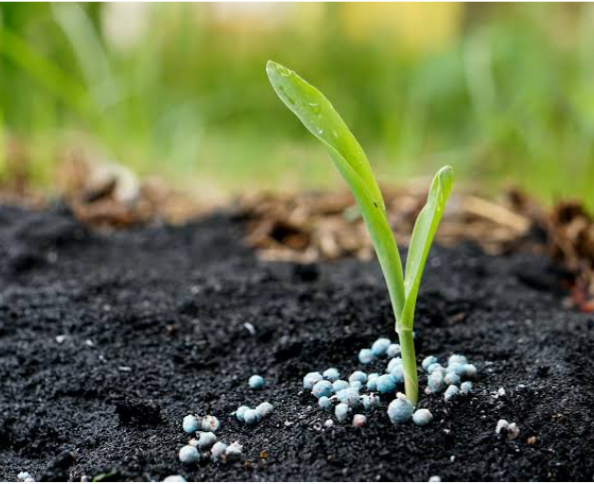
Plants need nutrients to grow. They absorb the nutrients from the soil via the plant’s root system.
As the plants continue to absorb the nutrients without replacement, yield continue to decrease and the soil becomes deteriorated in nutrients. Fertiliser (British English) or fertilizer (American English) is any additional substances or material of natural or synthetic origin that is applied to soil or to plant tissues to supply plant nutrients in order to improve growth and productivity of plants. They contain chemical elements that enhance the natural fertility of the soil or replace chemical elements taken from the soil by previous crops.
Plants derive their food from the sun, atmosphere and Soil. Sunlight provide photosynthates, Carbon is derived from the atmosphere. Oxygen and hydrogen from Water which plants absorb from both atmosphere and Soil. And essential nutrients from the soil. plants need at least 16 elements, of which the most important are carbon, hydrogen, oxygen, nitrogen, phosphorus, sulfur, potassium, calcium, and magnesium. Others which are micro elements are also needed in minute quantity. All of these elements are essential nutrients needed for plant growth and health, which fertilisers provide.
The 14 essential nutrients needed to assist plant grow include: nitrogen (N), phosphorus (P), potassium (K), chlorine (Cl), sulphur (S), magnesium (Mg), calcium (Ca),zinc (Zn), copper (Cu), iron (Fe), boron (B),molybdenum (Mo), nickel(Ni), and manganese (Mn),.
These nutrients must be in adequate quantity for plant uptake. When the nutrients are not enough or in excessive quantities, plant growth and development is affected.
DETERMINATION OF NUTRIENT NEED
It is usually not obvious when nutrients depletion occurs in the soil. Plants growing on the soil can show some symptoms of nutrient deficiency. Some symptoms of nutrient deficiency are similar. For example, Chlorosis (general yellow or pale green colour) indicates lack of sulfur and nitrogen. Iron deficiency produces white or pale yellow tissue. Plant disease caused by pathogens can produce appearances resembling nutrient deficiency. Drought or improper cultivation or fertilizer application each may create deficiency symptoms.Therefore, for specification of the particular nutrient deficiency, farmers need to carry out soil and plant analysis. Farmers will also be able to determine the degree of deficiency, and the amount and kind of fertilizer needed for a given yield inorder to prevent wastage.
Uses Of Fertilisers
Fertilisers are used for various purposes. The uses of fertilisers include:
1. To provide additional nutrients to the plants
2. They are added to improve the yield of the crops
3. Nitrogen-rich fertilisers are used for the greening of lawns
4. Organic fertilisers improve soil texture 5. They are used to improve the fertility of the soil
6. They are used in fish ponds in production of plankton which are food to fishes
7. They are used in controlling weeds
TYPES OF FERTILISERS
There are Majorly two type of fertilisers. They include : Inorganic and organic fertilisers.
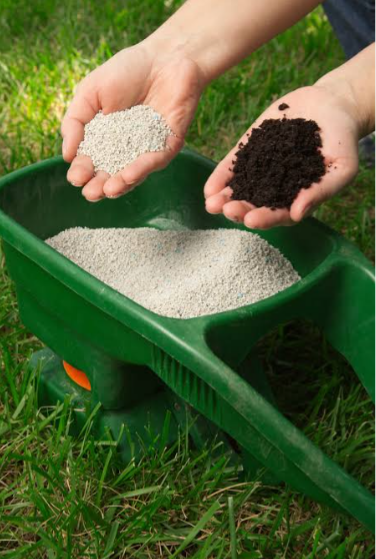
INORGANIC OR MINERAL FERTILISERS
Inorganic fertilizers also called chemical, commercial or Mineral fertilizers are manufactured from raw materials such as air, natural gas and mined ores in fertilisers manufacturing industries. They are not made through natural means but rather by chemical means. They are sold in three forms: solid, liquid and suspension.
The inorganic fertilizers are of the following four types: simple fertilisers, incomplete, compound and complete fertilisers.
SIMPLE FERTILISERS : These are fertilisers that supply a single element to plant. Example is urea which supplies Nitrogen only. Murate of potash (KCl) supplies only potassium. Single superphosphate and triple superphosphate that supply phosphorus.
INCOMPLETE FERTILISERS : They are fertilisers that supply two elements. For example, ammonium sulphate and ammonium phosphate
COMPOUND FERTILISERS : They are fertilisers that contain two or more fertiliser elements. They are regard to as the incomplete and complete fertilisers. Example include: N:P:K fertiliser, ammonium nitrate, ammonium phosphate etc. Atimes, micronutrients are added to these fertilisers. Example include: N:P:K:Mn fertilisers. ( That is, nitrogen, phosphorus, potassium and molybdenum fertiliser).
COMPLETE FERTILISERS : These are fertilisers that contain the three most important macro elements . That is, nitrogen, phosphorus and potassium. For example: N:P:K10:10:10, N:P:K 15:10:15 Fertilisers.
ADVANTAGES OF INORGANIC FERTILISERS
The advantages of inorganic fertilisers include:
1.Easy to transport, store, and apply
2. Water-soluble and can easily dissolve in the soil. Hence, they are easily absorbed by the plants
3. They have a rapid effect on the crops
4. They are quick acting as they need not to decompose before being absorbed
5. The exact amount of element can be calculated and added to soil for plant uptake
6. The nutrients in them are in ready to use form
DISADVANTAGES OF INORGANIC FERTILISERS
Inorganic Fertilisers have the following disadvantages:
1. They are expensive to purchase
2. The ingredients in the fertilizers are toxic to the skin and respiratory system
3. Excessive use of fertilisers damages the plants and reduces soil fertility
4. They are easily Leached during rainfall
5. They cause water pollution and eutrophication when washed into nearby water bodies
6. They cause soil acidity
7. Some element in them can make other elements not available to plant.
8. Heavy Application can cause build up of toxic salt concentration in soil.
9. They absorb moisture easily in storage therefore becoming caked.
10. They distroy soil microbes and causes environmental pollution.
The composition of inorganic nutrient in a fertiliser formulation is expressed in percentage. For example, if urea has an analysis of 20%N, it means that in every 100Kg of urea, there is only 20Kg of Nitrogen that is available in it. This percentage is usually labelled on the fertiliser container. N:P:K 20:10:10 mean, in 100Kg bag of N:P:K, there is 20 Kg N, 10KgP and 10Kg K available.
Each fertiliser material has its residual effect on the soil. For example, nitrogenous and some phosphate fertilisers makes the soil acidic
TERMINOLOGIES USED IN FERTILISERS
1. FILLERS: These are inert materials mixed with fertilisers to make proper weight, control moisture, and prevent the fertiliser from caking in the bag. Fillers include rice husk, groundnut husk, vermiculite etc
2. CARRIERS: These are materials or compound in which plant nutrients are supplied
3. ANALYSIS OR GRADE: This is the minimum gaurantte of percentage total nitrogen, available phosphorus and water soluble potassium in the material
4. FERTILISER RATIO: This is the grade reduced to it’s simplest term
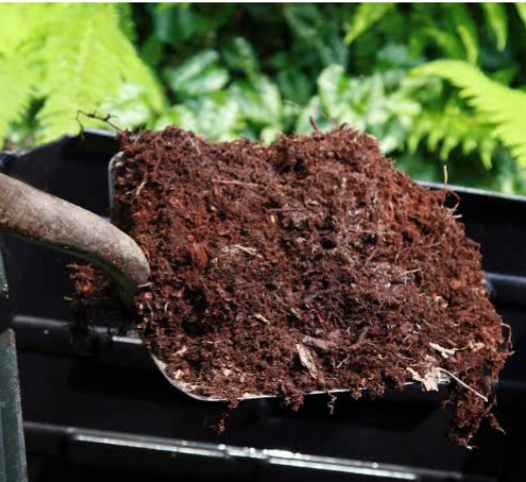
ORGANIC FERTILIZERS
Organic Fertilizers are Natural fertilisers derived from plants and animals. Crop residues, animal manures and slurries are the principal organic fertilizers. Although they have varying nutritional values, they are generally present on the farm and the nutrients and the organic carbon they contain are recycled. Animal manures and slurries cover a wide range of nutrient sources with different physical properties and nutrient contents. Furthermore, their nutrient content vary regionally and depend on the type of livestock and the farm management system..
Organic fertilizers can be obtained from the following products:
Agricultural Waste
Livestock Manure
Industrial Waste
Municipal Sludge
ADVANTAGES OF ORGANIC FERTILISERS
1. They help improve soil texture
2. By adding carbonic molecules necessary for plant growth, it enriches the soil.
3. Organic fertilisers boost the amount of organic matter in the soil,
4. They encourage microbial reproduction, and alter the physical and chemical composition of the soil.
5. They help bind soil particles together thereby increasing water holding capacity of the soil
6. Their slow decomposition make them release nutrients slowly to plants.
7. They are not expensive to procure
8. They improve the quality of the soil when used continuously overtime.
9. They do not cause pollution and are environmental friendly.
10. They do not leach out but contain organic matter that bind soil particles which prevent leaching.
DISADVANTAGES OF ORGANIC FERTILISERS
1. Organic fertilisers have low nutrient content compared to inorganic fertilisers
2. Organic fertilisers have slow release nutrient properties. Therefore, detrimental to plants.
3. They are bulky to handle compared to inorganic fertilisers
4. Large amount of organic fertilisers are needed in the soil and this can cause nitrogen depletion in the soil
5. Cost of transporting them is more compared to inorganic fertilisers.
TYPES OF ORGANIC FERTILISERS
The types of organic fertilisers include : compost, green manure, and farmyard manure.
1. COMPOST: Compost is used primarily as a soil amendment rather than as fertilizer because it has a low content of plant nutrients. It may be incorporated into the soil or mulched on the surface.
Compost is composed of rotted organic matter made from plant residues and Animal dung or droppings. The process of making compost is called composting. And the materials and equipment used for composting include: plant residues, animal dung or bird droppings, animal urine, water, wood ash, thermometer, tester, etc.
There are two methods of making compost. They are the stack method and the pit method. Composts commonly contain about 2 percent nitrogen, 0.5 to 1 percent phosphorus, and about 2 percent potassium. The nutrients in compost becomes available slowly, reduces leaching and extends availability over the whole growing season. The nutrients in Composts are essentially low, which explains why large amounts are needed to be applied.
Composts help improve the following : soil structure, aggregation, pore spacing, and water storage and increase crop yield.
2. GREEN MANURE : Green manure are plant residues plowed under. When the plant residues decay, they turn to organic matter which improve yield and soil qualities. These green manure crops are usually annuals, young plants with non woody but tender stem, either grasses or legumes, whose roots bear nodule bacteria capable of fixing atmospheric nitrogen. The tenderness of the stem would aid fast decaying process of the plant. But if woody, the decay process would be slow. The advantages of green manure crops are the addition of nitrogen to the soil, an increase in general fertility of soil, a reduction of erosion, an improvement of physical condition, and a reduction of nutrient loss from leaching. Disadvantages include the chance of not obtaining satisfactory growth; the possibility that the cost of growing the manure crop may exceed the cost of applying commercial nitrogen; possible increases in disease, insect pests, and nematodes (parasitic worms); and possible exhaustion of soil moisture by the crop.
3. FARMYARD MANURE: These are manure made from animal excreta and bedding material. Large amounts of manure are produced by livestock; such manure have value in maintaining and improving soil fertility because of the plant nutrients, humus, and organic substances found in them.
These manure do harbour human pathogens. Therefore, the USDA National Organic Standards mandate that raw manure must be applied no later than 90 or 120 days before harvest of crops, depending on whether the harvested part of the crop is in contact with the ground. Composted manure that has been turned five times in 15 days and reached temperatures between 55 and 77.2 °C (131 and 171 °F) has no restrictions on application times. Manure must be carefully stored to minimize loss of nutrients, particularly nitrogen.
Nutrients in Manure can be graded as 0.5:0.25:0.5 (nitrogen, phosphoric oxide, and potash). These nutrients are in an unmineralized form. Therefore, cannot be taken up by plants. Soil microbes will help break down organic matter and transform nutrients into a “mineralized” state for plant absorbtion.
Manure provides the following benefits. It supplies humus, which improves the soil’s physical characteristics by increasing its capacity to absorb and store water, enhance soil aeration, and improve the activities of soil microbs. Manure incorporated into the topsoil will help prevent erosion from heavy rain and slow down evaporation of water from the surface. manure are atimes used as mulching material and weed killer.
METHOD OF FERTILISER APPLICATION
Fertilizer Application
Fertilisers are produced in different forms. These forms include: granular form, liquid form, pelletized form, suspension form, etc
The application method of fertilisers varies according to the spacing of crop, type of fertilizer material, time of application.
A. Solid Form
1. Broadcasting – This is the even and uniform spreading of solid fertilizers by hand or spreader over the entire field before or after sowing of the crop. If the fertiliser is applied before planting the crop, incorporation by tilling or cultivating can be done. Farm yard manure, compost, urea, superphosphate, and lime etc are applied by this method.
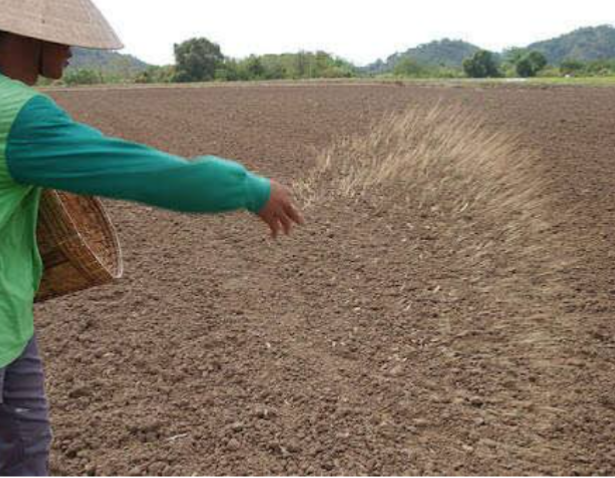
2. BASAL APPLICATION This is the application of fertilizers into the soil from where the crop roots can take them easily.
3. DRILLING AND PLACEMENT – This is when furrows are made in soil at a desired depth and Fertilisers placed in the soil furrows .
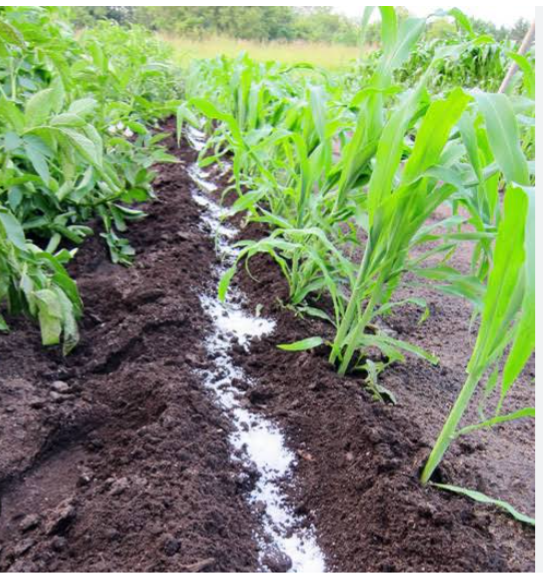
4. PLOUGH SOLE PLACEMENT – This is when the plough makes an open furrow at plough sole and fertilisers applied in the open furrows of the plough sole level while ploughing. Such furrows are covered immediately during the next run of the plough.
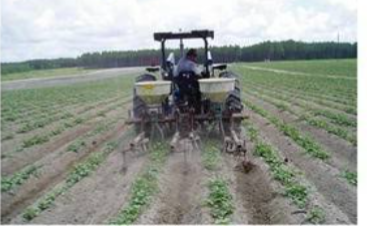
5. DEEP PLACEMENT –The method is carried out on dryland. The fertilizers are placed deeper at a depth of 10-12 cm, than the sole plough level. It is usually done in puddle rice soil.
6. SUBSOIL APPLICATION – This is when fertilizers are placed deeper than the seeding or planting depth. That is, Fertilizers are applied in the subsoil especially for tree crops and orchard crops at a depth above 15 cm.
7. LOCATION OR SPOT APPLICATION – There is a distinction between placement and localized placement. The former refers to applying fertilizer into the soil without special reference to the location of the seed or plant. At the same time, the latter implies the application of fertilizer into the soil close to the seed or root zone or the spot near the roots from which roots can absorb easily.
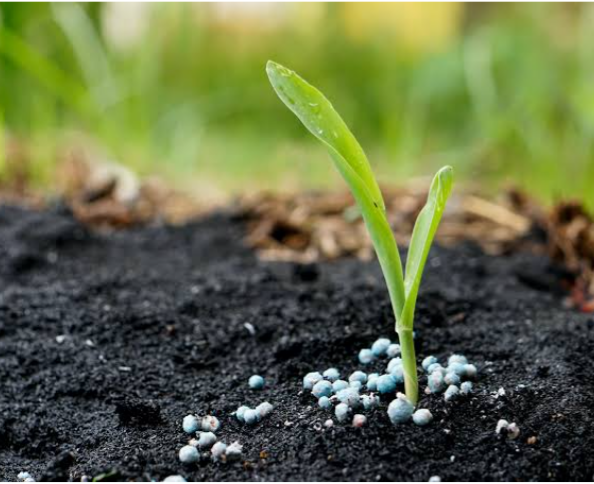
8. CONTACT OF DRILL PLACEMENT –When applying fertilizer at the same time in drills and also placing the seed in the drills, both seed or seedling and fertiliser are in contact, then it is called contact placement. It is done by using seed-cum-fertilizer drill. Sometimes fertilizer is drilled by implement, and seed is sown in the same furrow.
9. BAND PLACEMENT – This is the placement of manures or fertilizers or both in bands on the side or both sides of the row at about 5 cm away from the seed or plant in any direction. Such band placement is of three types.
10. HILL PLACEMENT – In widely spaced crops, like cotton, castor, cucurbits fertilizers or manures are applied on both sides of plants only but not continuously along the row.
11. ROW PLACEMENT – Along the entire rows of closely spaced crops like cereals, minor millets, potatoes, sugarcane and tobacco, fertilizers are applied continuously at 2-2.5 cm depth on one or both sides of the row in continuous bands.
12. CIRCULAR OR RING PLACEMENT – Application of manures and fertilizers around the hill or the trunk of fruit tree crops in the active root zone at a depth of about 2.5-5 cm .
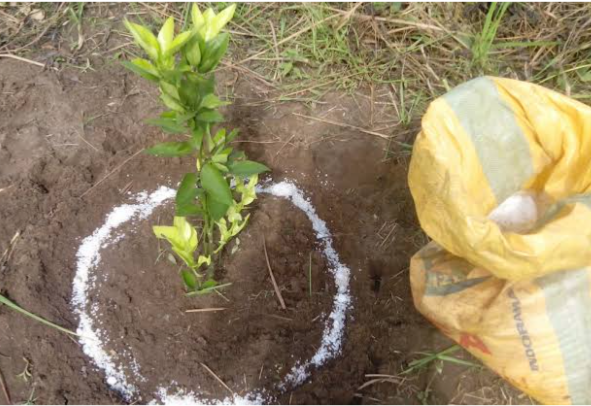
13. POCKET OR SPOT PLACEMENT – Application of fertilizers at a fixed spot with the help of a bamboo peg deep in soil to increase its efficiency. Pocket placement is usually done for crops like sugar cane . Fertilizers are put in 2 to 3 pockets opened around every hill using the stick.
14. SIDE DRESSING OR TOP DRESSING – It refers to hill and ring placement of manures or fertilizers. It consists of spreading the fertilizer between the rows or around the plants. The difference between the two is that when fertilizer are spread in standing crops without considering the crop rows, this is termed as a top dressing. However, when the crop rows are taken into account, and the material is dropped on the ground surface near the crop rows, it is called side dressing.
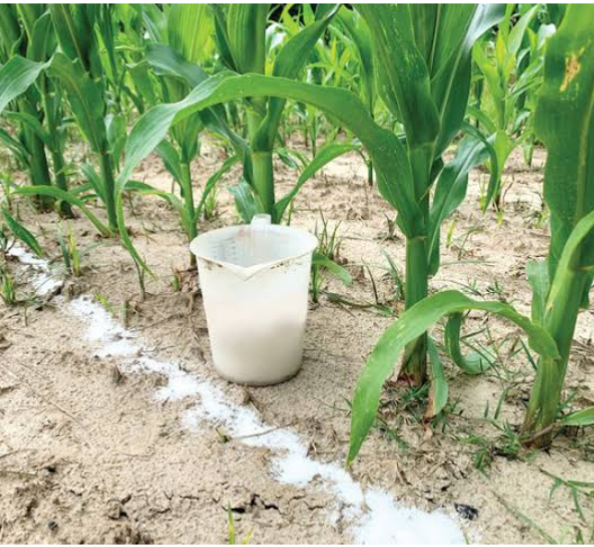
15. PELLET APPLICATION – Nitrogen fertilizers are pelleted like mud ball or urea super granules (USG) and placed deep (10 cm) into the saturated soils (reduced zone) of wet land rice to avoid nitrogen loss from applied fertilizers.
B. LIQUID FORM
1. FOLIAR APPLICATION: It refers to spraying of fertilizer solution on the foliage of plants for quick recovery from the deficiency (either N or S).
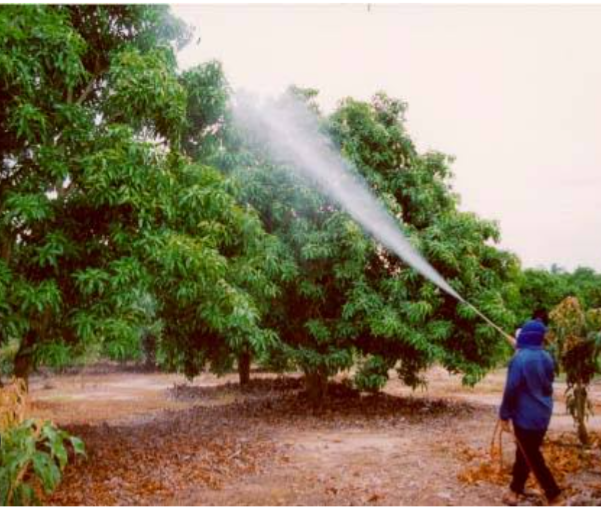
2. Fertigation: It is the application of fertilizer dissolved in irrigation water in either open or closed system i.e., lined or unlined open ditches and sprinkler or trickle systems respectively.
3. STARTER SOLUTIONS: This method is used for transplanted crops. The fertiliser solutions are prepared in low concentrations which are used for soaking seeds, dipping roots, spraying on seedlings etc. In irrigation water, the fertiliser solution is applied to wet the field so that the seedlings may establish.
4. APPLICATION THROUGH IRRIGATION WATER
The required quantity of fertilizer material is dissolved in irrigation water and can be used in surface, sprinkler, or drip irrigation systems.
5. FOLIAR SPRAYING OF NUTRIENT SOLUTIONS
In this method of fertilizer application, urea, micronutrients, and other required materials are dissolved in water, filtered, and sprayed over the crop foliage with the help of a suitable sprayer.
6. DIRECT APPLICATION TO THE SOIL: Liquid fertilizers like anhydrous ammonia are applied directly to the soil with special injecting equipments. Liquid manures such as urine, sewage water and cattle shed washing are directly let into the field.
In conclusion, the amount of fertilisers to apply to soil must be calculated to prevent wastage. Lot of farmers do not have this understanding of fertiliser calculation, therefore, they should consult a soil scientists or agronomist for their soil analysis, interpretation of soil test and calculation of required amount of fertilisers needed to apply to their farm.
